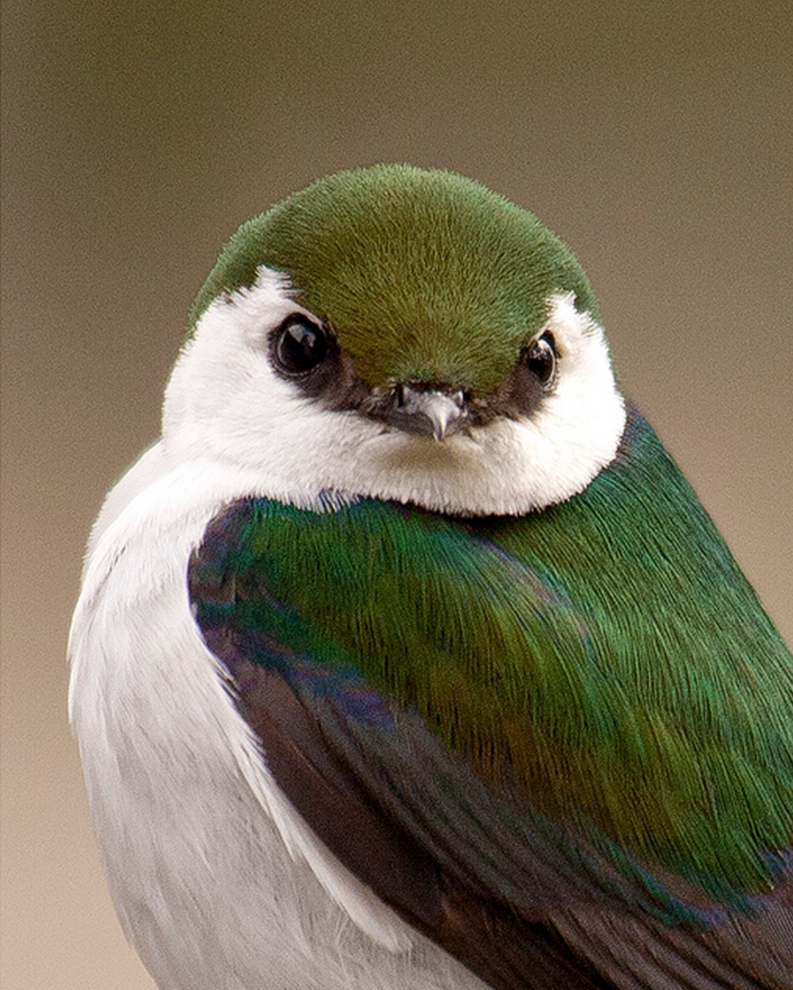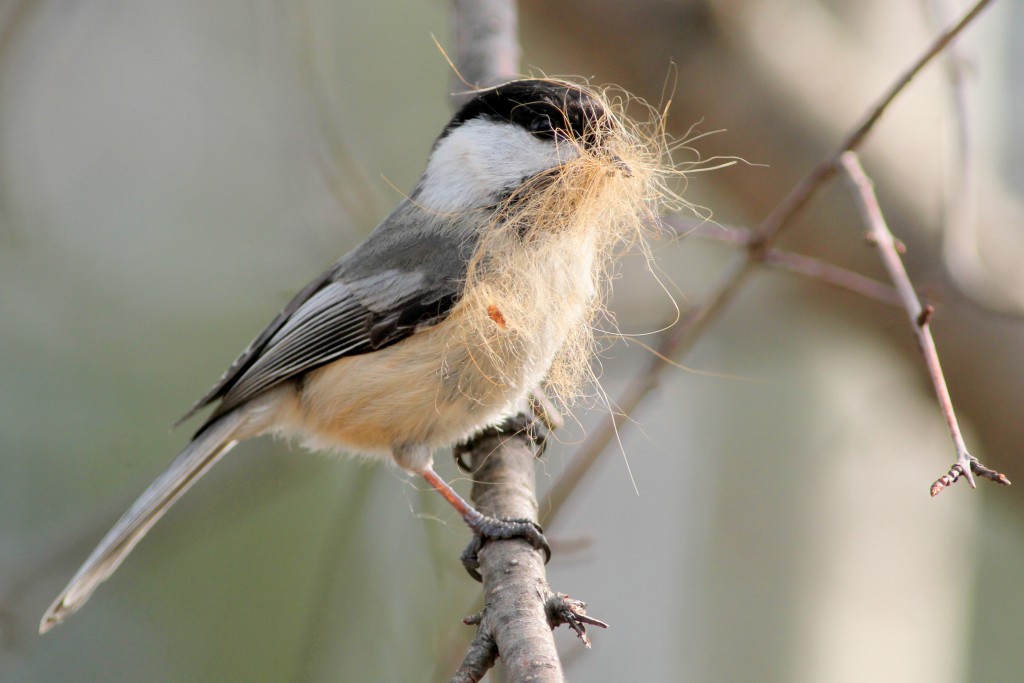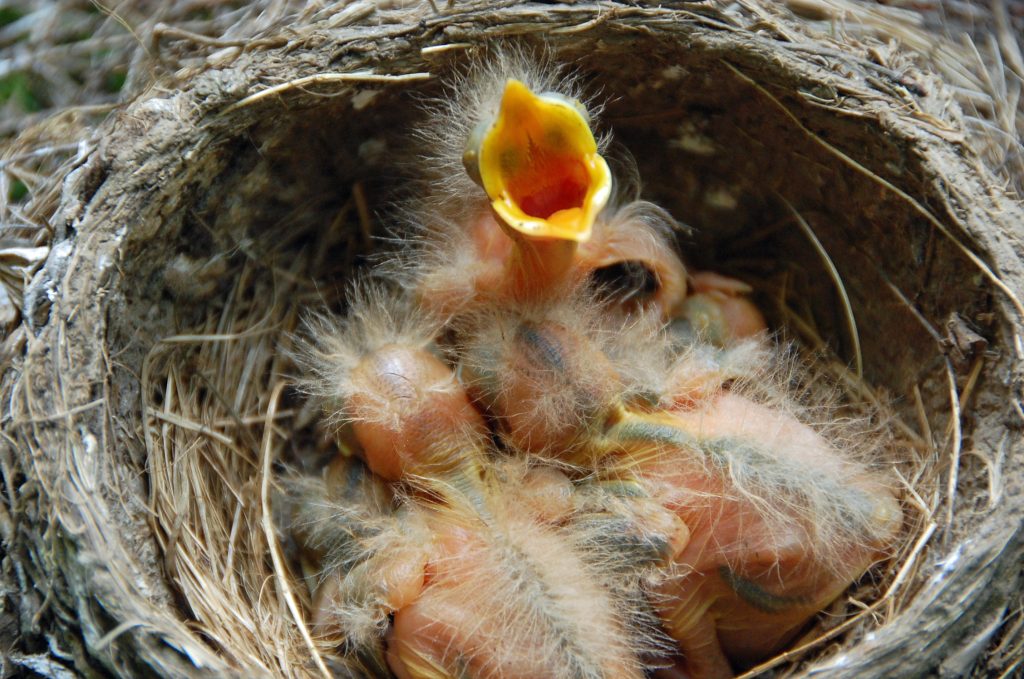How to Find Nests
Please be sure that you understand the NestWatch Code of Conduct and Nest Monitoring Protocol before you begin nest searching. If proper precautions are not taken, you may unintentionally harm birds or their nests.
Learn to identify birds
Use your favorite field guide and the contents of the NestWatch website to learn how to identify your local birds using size and coloration, vocalizations, behaviors, and habitat preferences. Being able to identify birds by their songs and calls can be especially useful. If you are new to learning bird vocalizations, start off by concentrating on a few common nesting birds that may visit your backyard. The Cornell Lab of Ornithology’s All About Birds and Merlin app are great, free resources.
Practice during the non-breeding season
Winter is a great time to learn where to look for nests. Once the leaves of shrubs and trees have fallen, you will be able to easily see where old nests are located without risking disturbance to active nests. It may be difficult to determine what species made these older nests, but this will help you form a search image of where to begin looking for new nests during the breeding season. Some birds build new nests close to where they built them in previous years.
Know when to search for nests
Generally speaking, birds in North America nest from March through August; however, there are many exceptions. Some species only nest during a short period within this timeframe, while in warmer areas some species may nest all year. Learn when common species are likely to nest in your area so you know which ones to look for and when to look for them.

Male Violet-green Swallow
Watch and listen first
Before you start searching for nests, spend some time quietly observing the birds around you; they will often give you important clues about where their nests are located. Not only will listening first tell you what species’ nests may be present, but because male birds sing to mark the boundaries of their territories they will also tell you generally where to search. Watch individual males as they move from point to point and sing, and mark their locations on a map or drawing of the area that you will search. Together, these points will outline the approximate territory surrounding a nest site. Within this territory, look for a female calling to her mate. Watch her from a distance through binoculars; many females will call on their way to the nest or even while on the nest (e.g., grosbeaks).
Searching during nest building
Early in the breeding season it may be relatively easier to find nests, particularly if you catch birds while they are still building their nests. During this time, birds can literally show you where their nests are located, and vegetation typically hasn’t grown enough to hide many nests. Watch for birds carrying grass, twigs, plant down, and other nesting material and follow them. Once you locate a nest that is under construction, quickly back off! Disturbing birds at this time can cause them to move elsewhere. Also, be aware that some species build several “dummy” nests that are never actually used. During nest building, males will also mark their territories by frequently singing.

Black-capped Chickadee with Nesting Material
Searching during egg laying
Once nests have been completed, visitations by adults become much less common. Females may only visit nests briefly to lay eggs, and will try to draw little attention while doing so to avoid detection by predators. During this time it is difficult to depend on birds directly showing you where their nests are located, although males will continue to mark their territories by singing. You will mostly have to rely on prior experience, search images, and luck to find nests.
Searching during incubation
During incubation, male birds may increase their territorial singing but females may seem to disappear altogether. If you are near a nest site, incubating birds may fly from the nest. An alert observer can sometimes see where a flushed bird flew from, but be aware that some species will silently scurry away from their nest before flushing in an attempt to draw predators away from the actual nest location. Listen for the short call notes and distress cries that birds may give when you are near their nests; generally speaking, the closer you are, the more intense these cries will be. Some birds will even swoop at you when you are extremely close to their nests. If distress cries continue for more than a few minutes without finding the nest, do not stay in the area. Instead, remember the location for further investigation at a later time.
Searching when nestlings are present
After eggs hatch, adults make frequent trips to and from their nests to tend to their young. Watch for birds carrying food to nests and white fecal sacs away from nests. Be alert to alarm cries of adults and begging calls of young birds that will direct you to nest locations. Be extremely careful not to disturb nestlings that are fully feathered and very alert. They may easily be scared from the safety of their nest before they are ready.

American Robin Nestlings
Patience is key
Searching for nests can be a frustrating process, and it will take a while to become proficient. Many people choose to specialize in finding nests of only a few species or specific types of nests, such as those located in shrubs or on tree branches. But, with a bit of practice and lots of patience, your efforts will be rewarded.
